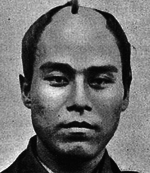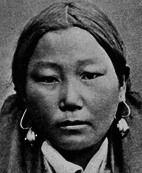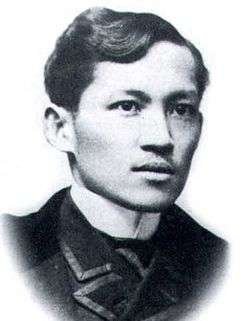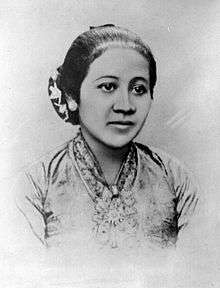Sinodonty and Sundadonty
Sinodonty and Sundadonty are two patterns of features widely found in the dentitions of different populations in East Asia. These two patterns were identified by anthropologist Christy G. Turner II as being within the greater "Mongoloid dental complex".[2] Sundadonty is regarded as having a more generalised, Australoid morphology and having a longer ancestry than its offspring, Sinodonty.
The combining forms Sino- and Sunda- refer to China and Sundaland, respectively, while -dont refers to teeth.
Description
Turner found the Sundadont pattern in the skeletal remains of Jōmon people of Japan, and in living populations of Taiwanese aborigines, Filipinos, Indonesians, Thais, Borneans, Laotians, and Malaysians.
By contrast, he found the Sinodont pattern in the Han Chinese, in the inhabitants of Mongolia and eastern Siberia, in the Native Americans, and in the Yayoi people of Japan.
Sinodonty is a particular pattern of teeth characterized by the following features:
- The upper first two incisors are not aligned with the other teeth, but are rotated a few degrees inward and are shovel-shaped.
- The upper first premolar has one root (whereas the upper first premolar in Caucasians normally has two roots), and the lower first molar in Sinodonts has three roots (3RM1)[3] whereas it has two roots in Caucasoid teeth.
Applicability
In the 1990s, Turner's dental morphological traits were frequently mentioned as one of three new tools for studying origins and migrations of human populations. The other two were linguistic methods such as Joseph Greenberg's mass comparison of vocabulary or Johanna Nichols's statistical study of language typology and its evolution, and genetic studies pioneered by Cavalli-Sforza.
Today, the largest number of references to Turner's work are from discussions of the origin of Paleo-Amerindians and modern Native Americans, including the Kennewick Man controversy. Turner found that the dental remains of both ancient and modern Amerindians are more similar to each other than they are to dental complexes from other continents, but that the Sinodont patterns of the Paleo-Amerindians identify their ancestral homeland as north-east Asia. Some later studies have questioned this and found Sundadont features in some American peoples.
For example, in 1996, Rebecca Haydenblit of the Hominid Evolutionary Biology Research Group at Cambridge University did a study on the dentition of four pre-Columbian Mesoamerican populations and compared their data to "other Mongoloid populations".[4] She found that "Tlatilco", "Cuicuilco", "Monte Albán" and "Cholula" populations followed an overall "Sundadont" dental pattern "characteristic of Southeast Asia" rather than a "Sinodont" dental pattern "characteristic of Northeast Asia".[4]
See also
Notes
- ↑ Howells, William W. (1997). Getting Here: the story of human evolution. ISBN 0-929590-16-3
- ↑ G. Richard Scott, Christy G. Turner, (2000). The Anthropology of Modern Human Teeth: Dental Morphology and Its Variation in Recent Human Populations. Cambridge University Press. ISBN 0521784530
- ↑ https://www.unr.edu/Documents/liberal-arts/anthropology/Scott/Scott_Dental_Anthropology_EHB.pdf
- 1 2 Haydenblit, R. (1996), Dental variation among four prehispanic Mexican populations. American Journal of Physical Anthropology, 100: 225–246. doi: 10.1002/(SICI)1096-8644(199606)100:2<225::AID-AJPA5>3.0.CO;2-W
References
- The Anthropology of Modern Human Teeth: Dental Morphology and Its Variation in Recent Human Populations by George Richard Scott, Christy G Turner II.; Cambridge University Press 1997; ISBN 0-521-78453-0 - Google Book Search
- Wells, Spencer (2004). The Journey of Man : A Genetic Odyssey. New York, NY: Random House Trade Paperbacks. ISBN 978-0-8129-7146-0.
- Kimura, Ryosuke; Yamaguchi, Tetsutaro; Takeda, Mayako; et al.: A Common Variation in EDAR Is a Genetic Determinant of Shovel-Shaped Incisors. AJHG. Volume 85, Issue 4, 9 October 2009, Pages 528–535, online



